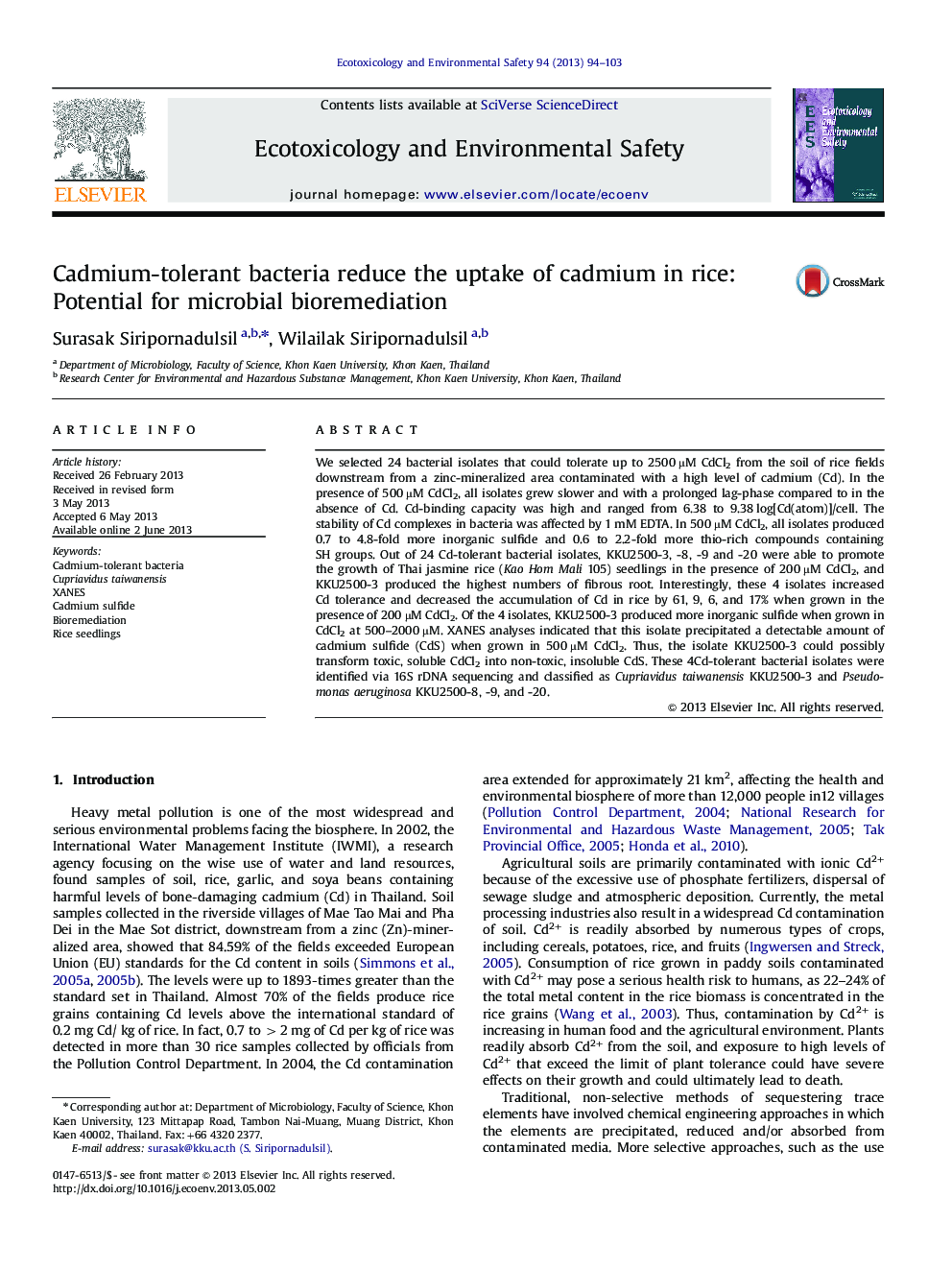| کد مقاله | کد نشریه | سال انتشار | مقاله انگلیسی | نسخه تمام متن |
|---|---|---|---|---|
| 4420489 | 1618969 | 2013 | 10 صفحه PDF | دانلود رایگان |

• Cupriavidus taiwanensis KKU2500-3 was isolated from cadmium (Cd) contaminated soil.
• KKU2500-3 was highly resistant and able to bind to Cd efficiently.
• KKU2500-3 produced more thio-containing proteins and inorganic sulfide in CdCl2.
• KKU2500-3 could transform a toxic, soluble CdCl2 into a nontoxic, insoluble CdS.
• KKU2500-3 decreased an accumulation of Cd in rice plants by 61%.
We selected 24 bacterial isolates that could tolerate up to 2500 µM CdCl2 from the soil of rice fields downstream from a zinc-mineralized area contaminated with a high level of cadmium (Cd). In the presence of 500 µM CdCl2, all isolates grew slower and with a prolonged lag-phase compared to in the absence of Cd. Cd-binding capacity was high and ranged from 6.38 to 9.38 log[Cd(atom)]/cell. The stability of Cd complexes in bacteria was affected by 1 mM EDTA. In 500 µM CdCl2, all isolates produced 0.7 to 4.8-fold more inorganic sulfide and 0.6 to 2.2-fold more thio-rich compounds containing SH groups. Out of 24 Cd-tolerant bacterial isolates, KKU2500-3, -8, -9 and -20 were able to promote the growth of Thai jasmine rice (Kao Hom Mali 105) seedlings in the presence of 200 µM CdCl2, and KKU2500-3 produced the highest numbers of fibrous root. Interestingly, these 4 isolates increased Cd tolerance and decreased the accumulation of Cd in rice by 61, 9, 6, and 17% when grown in the presence of 200 µM CdCl2. Of the 4 isolates, KKU2500-3 produced more inorganic sulfide when grown in CdCl2 at 500–2000 µM. XANES analyses indicated that this isolate precipitated a detectable amount of cadmium sulfide (CdS) when grown in 500 µM CdCl2. Thus, the isolate KKU2500-3 could possibly transform toxic, soluble CdCl2 into non-toxic, insoluble CdS. These 4Cd-tolerant bacterial isolates were identified via 16S rDNA sequencing and classified as Cupriavidus taiwanensis KKU2500-3 and Pseudomonas aeruginosa KKU2500-8, -9, and -20.
Figure optionsDownload as PowerPoint slide
Journal: Ecotoxicology and Environmental Safety - Volume 94, 1 August 2013, Pages 94–103